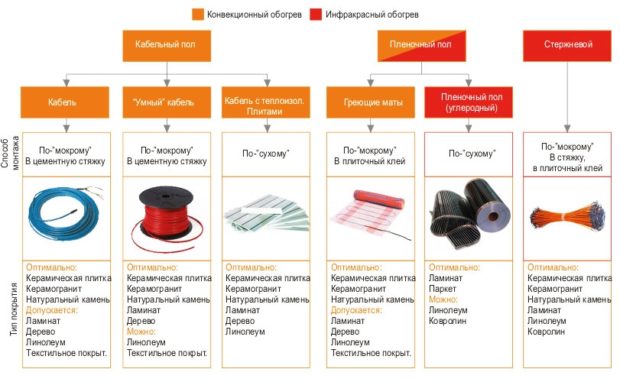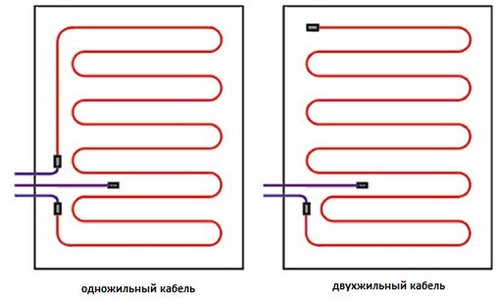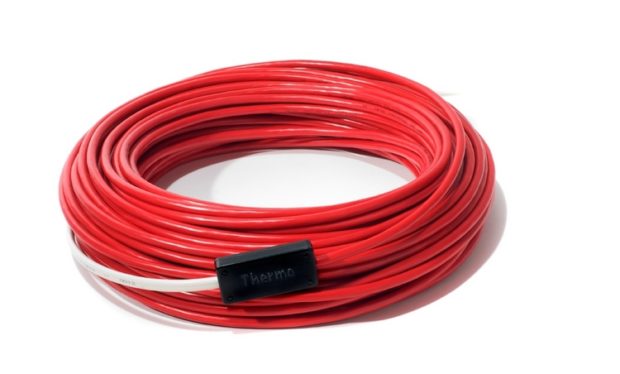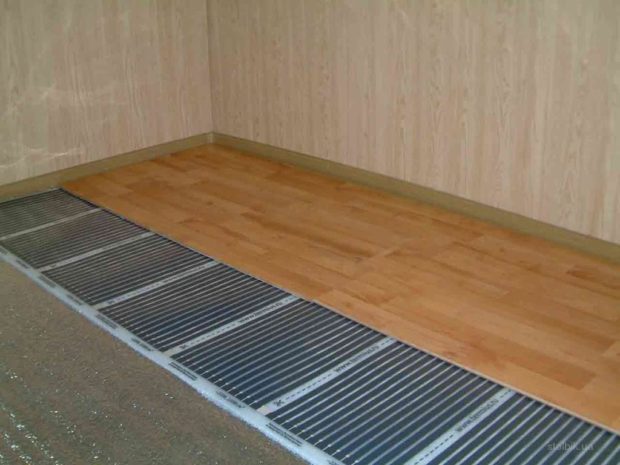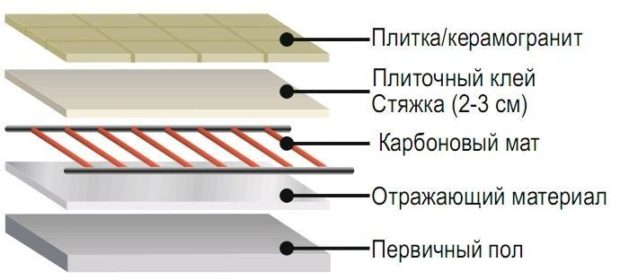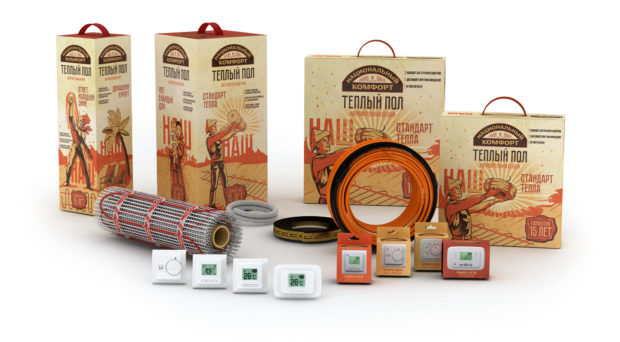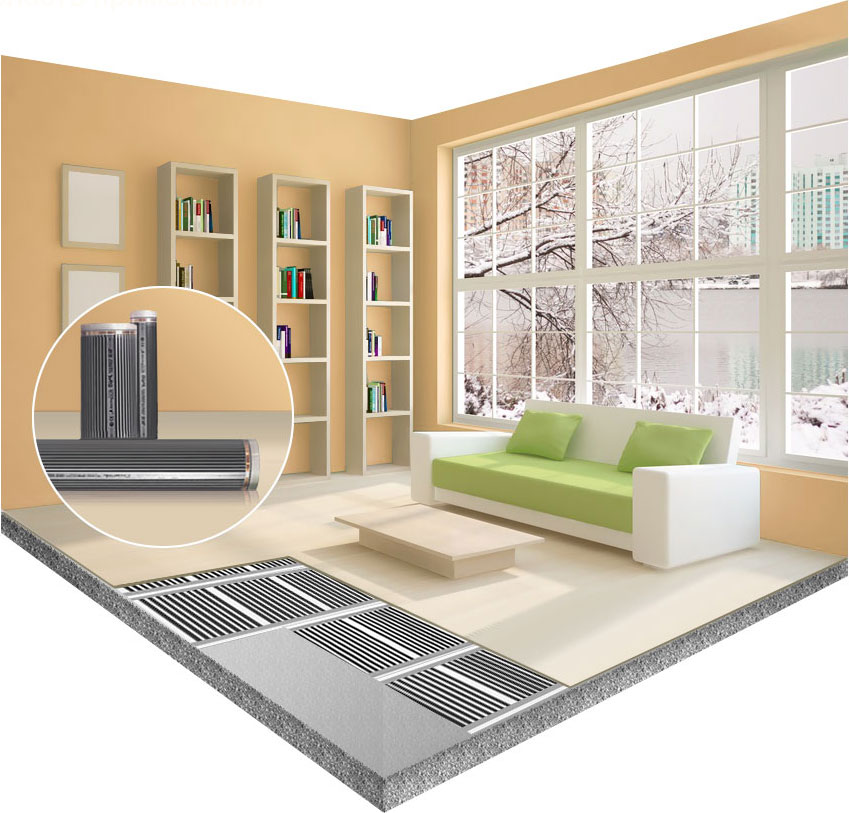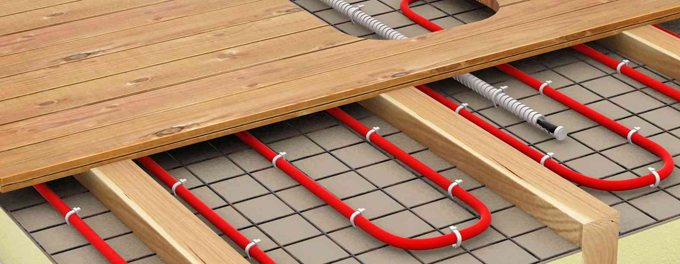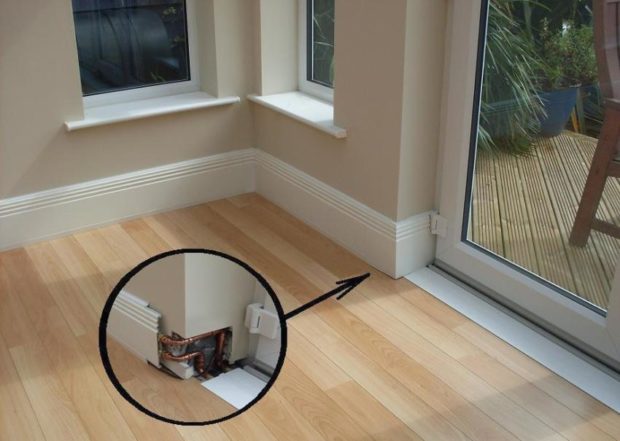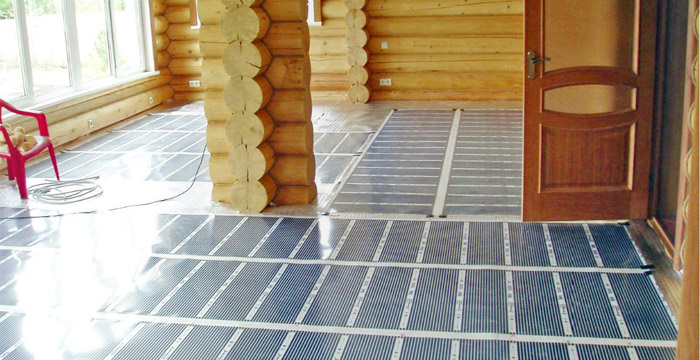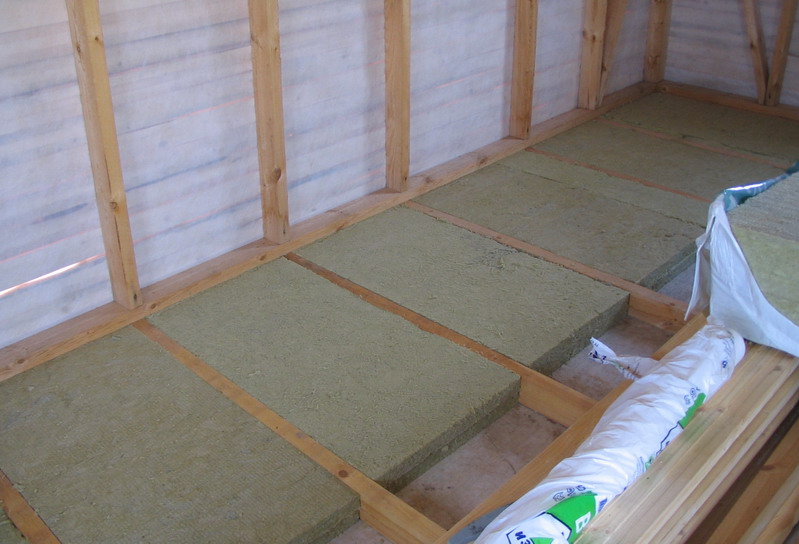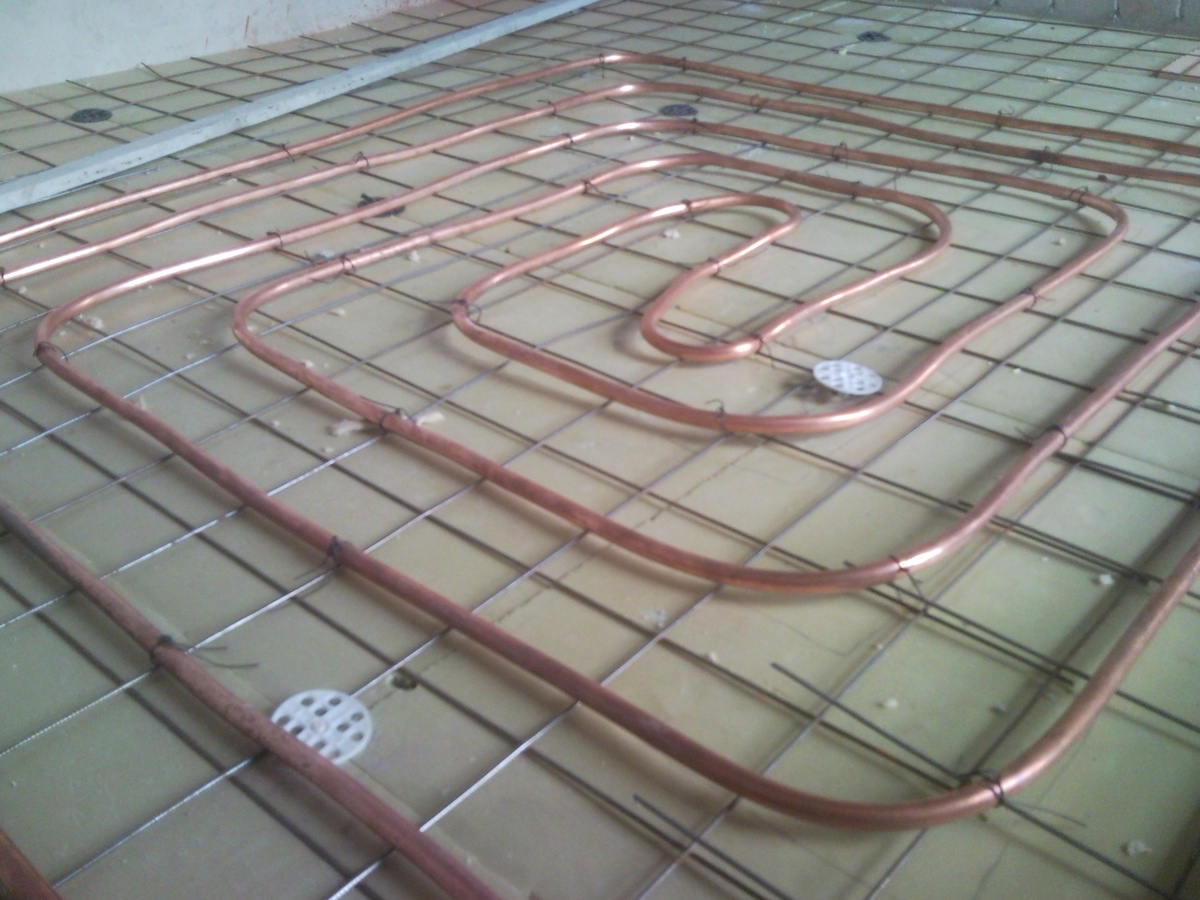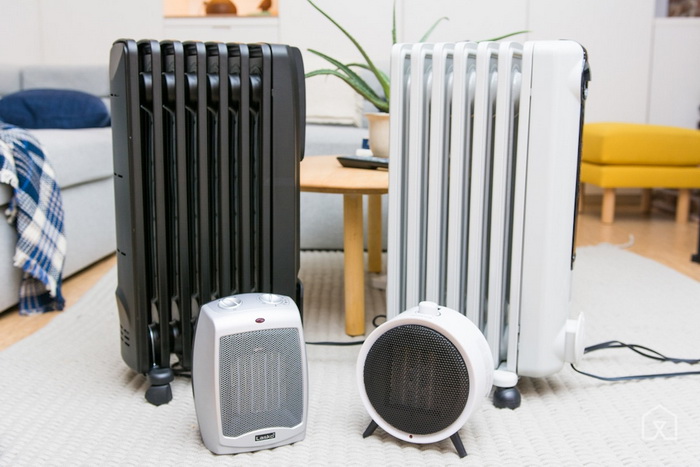Choosing an electric heated floor - 9 tips for choosing
Warm floors are a real salvation in the conditions of cold winters and dank off-season. With the advent of electrical systems, underfloor heating became available and residents of apartment buildings. Electric heated floors displace water, since they are easier to install, do not require coordination with special services, more secure, reliable and universal. For an ordinary city apartment, this is a great find. That's just how to choose the electric floor correctly, because there are so many different offers? Traditional cable systems today compete with film and core. At the same time, warm floors differ in power and put forward requirements for flooring. It seems impossible to take so many factors into account, but it's easier than you think. We put all the dots on the "i".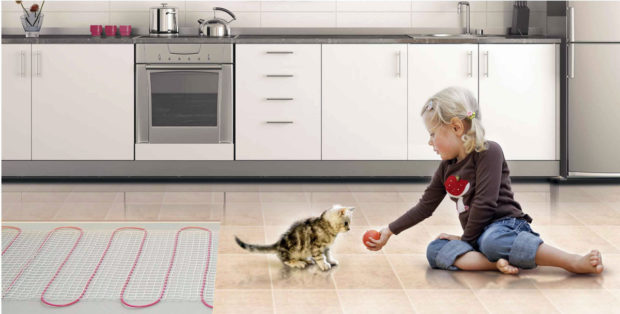
No. 1. Types of electric underfloor heating
Electric underfloor heating can be used in any room, even on the balcony. With it, you definitely can’t be afraid that you’ll flood the neighbors, and no need to coordinate any documentation. Moreover, an electric heated floor is more durable than water and easier to install. Underfloor heating systems allow more evenly and efficiently to distribute heat in the room, when compared with ordinary radiator heating. Moreover, you can turn on the heating even when the heating season has not yet begun, and the apartment is already quite cool. Usually heated floor is used as additional heat sourcebut in some cases he can take the lead and become independent way of heating.
The choice of a specific system of underfloor heating will depend on many factors. it type of flooring, type of room, heating requirements, budget, as well as the role that is assigned to the warm floor (primary or secondary heat source). Fortunately, there is plenty to choose from.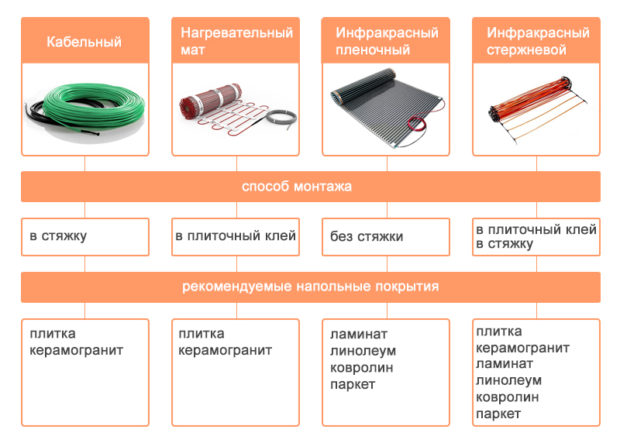
By the type of system, an electric heated floor is divided into the following types:
- cable. Its basis is a heating cable that converts electrical energy into heat. Such an electric heated floor can be both an additional and the main source of heat. It is laid under tile, porcelain tile and stone floor. Widespread heating cables from Rehau;
- film. Its basis is a film that carries out heating according to the infrared principle, i.e. first the objects heat up, and then the air. It is easier to mount the film, it takes up a minimum of the room’s height, it can be laid under laminate, carpet, linoleum, parquet board;
- pivotal the floor works the same as the film, according to the infrared principle, but has a more reliable structure. The basis here are more or less rigid emitter rods, which are connected by two parallel conductors. I have not yet found wide distribution.

According to the principle of heating, electric heated floors are:
- convection. These are cable floors (heating cable and heating mat). The room is heated according to the principle of convection, i.e. the cable first heats the screed and flooring, the latter warms the air in the room. Warm air rises, cools and returns down. The cycle repeats.The room warms up evenly, and the floor temperature will always be slightly higher than the air temperature;
- infrared. These are films and carbon rods that heat the floor, interior and human. Then, air warms up from heated objects. In this case, the heating rate is higher, and the loss of valuable energy is lower. Savings on electricity can reach 60% (when compared with convection systems).

By type of installation, electric heated floors are:
- installation in screed or tile adhesive. So they mount cable and rod floors. Installation is possible during overhaul;
- installation without screedunder the floor covering. So arrange film infrared floors. Installation is possible during cosmetic repairs.
No. 2. Cable floor heating
Cable flooring is valued for versatility and reliability. For its arrangement use single-core and two-core cables:
- single core It is cheaper, but more difficult to install, since both ends must be connected to a thermostat. Another drawback is the formation of a strong electromagnetic field. As a rule, such a cable is used in garages, storage facilities and similar facilities;
- two-wire cable It costs more, but creates a minimum electromagnetic field (at the level of the TV), and it’s easier to install. For apartments choose just such a cable.

The thickness of the cable is 5-7 mm, it is sold in coils, usually laid with a snake. The final power of the system depends on the installation step. Mounting the cable floor is not very easy, but the cable itself is inexpensive. The cable floor is laid on a layer of thermal insulation (extruded polystyrene foam or foamed polyethylene) to prevent heat loss. The cable on the insulation itself is not laid out - there must be an intermediate screed between them. Mount the cable in a cable tie with a thickness of 3-5 cm, which must be taken into account when calculating the height of the room after repair. Thermal insulation must be chosen so as to prevent overheating of the system.
Cable connects to thermostatwith which you can control the heating of the room and set comfortable conditions. There are systems with two sensors: the second is necessary to control the level of heating of the floor surface, this is important for wood coatings. If warm is stacked in several rooms, then each has its own temperature regulator, since heat losses are different everywhere, and the heat requirements of households may differ.
Recently appeared a cable thickness of 2-2.5 mm, which allows you to reduce the height screeds. Top of progress is designs that accumulate heat. They work and accumulate heat at a time when electricity is cheaper, and then give off heat.
Main advantages:
- universality. Cable is best under a tile, porcelain tile, a stone and bulk floor, but some experts allow laying under laminate, linoleum, parquet board and carpet, however, in these cases the heat transfer will be lower due to the low thermal conductivity of the materials;
- resistance to deformation and damage;
- relatively low cost;
- the ability to install in premises of complex configuration;
- can be used as the main source of heat;
- ability to accumulate heat.

Minuses:
- the screed “steals” usable space;
- complexity of installation. Screeding is a labor-intensive process, and laying a cable floor requires skill (step calculation, marking, fasteners);
- the inability to use a warm floor for the first 30 days;
- after turning on the heating, you will have to wait about 3 hours until the room warms up.

No. 3. Heating mat (thermomat)
In fact, this is the same cable as in the previous version, only for you the manufacturer has already attached it to the grid, freeing one of the most complicated installation processes. The thermomat is a thin electrical cable attached to a fiberglass mesh.
Installation of heating mats can be done already on the finished screed. Thermometers are sold in rolls with a width of about 50 cm and a length of 20-24 m. The cable is laid already with a certain step, the power is specified by the manufacturer (usually 100-150 W / m2, less often 200 W / m2), so you won’t have to calculate anything , as well as marking the location of the cable on the floor. It is enough to roll the mats on the floor (avoiding the areas where the massive furniture will stand), cut the net in some places (but do not cut the cable - it just unfolds it, as in the figure below), fix the net and carry out the minimum screed. You can do without screed, using tile glue, on which tiles are eventually laid. So you do not lose altitude at all and fix the grid.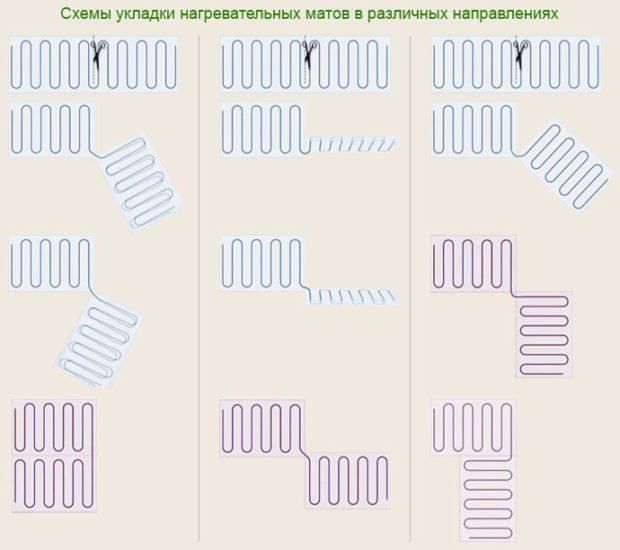
pros:
- very simple installation;
- the small thickness of the mat (3-4 mm) and the ability to do without a screed will allow you to save the height of the room;
- heating speed, already in 30-40 minutes after switching on the set temperature will be reached;
- the possibility of styling during cosmetic repairs;
- installation can be done in any form of premises;
- service life of 15-20 years.
Minuses:
- a thermomat costs more than a cable;
- heating mats are lower in power than cable, so they can only be used as additional heating;
- if laying was carried out in tile adhesive, then it will not be possible to turn on the warm floor for 7-10 days, if in the screed - 21-30 days.
Thermomats choose when it is not planned to carry out major repairs, and / or when it is necessary to maintain height.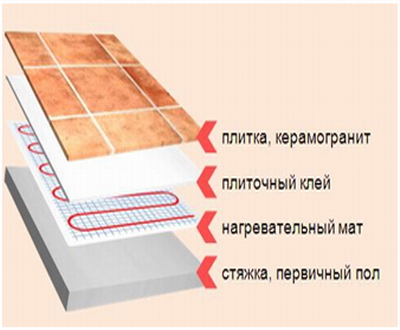
Number 4. Film infrared heat-insulated floor
Film IR floor - This is a flat heating element that converts electricity to infrared radiation. It is working by the principle of sunlight: Heats objects, but not air. IR radiation propagates in a straight line, heating objects in its path (furniture, people, flooring). The presence of an intermediary - air, is excluded, but it also warms up over time, from heated objects. This type of heating is considered the most comfortable and healthy for humans.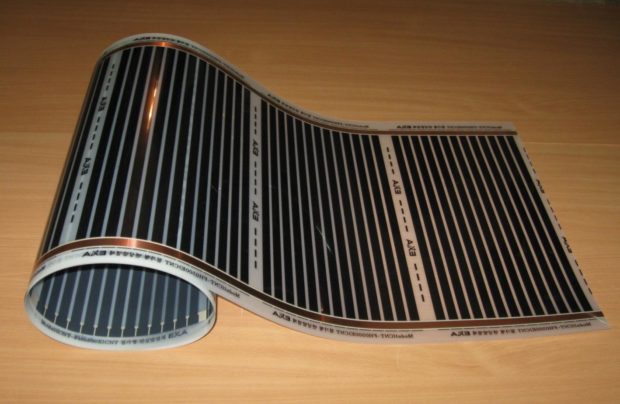
IR film comprises two dense polyester layers, between which are copper conductive busbars and strips of carbon paste. The film thickness is only 0.4 mm, the width of the roll is from 50 to 100 cm, the length is up to 50 cm. The film is laid on a clean, even base directly under the floor covering. There are cut lines on the roll, so it is easy to mount the film in a room of any configuration. The segments are interconnected by contact clips. When laying, 5-15 cm recede from the walls, 30 cm from radiators. The film is not laid under massive pieces of furniture.
Filling with a screed or tile adhesive is not carried out - the film is easily damaged. A floor covering is laid directly on top of the warm floor (laminate, parquet). When laying under linoleum and carpet it is better to additionally lay a layer of fiberboard or plywood. The film is sometimes mounted on the walls.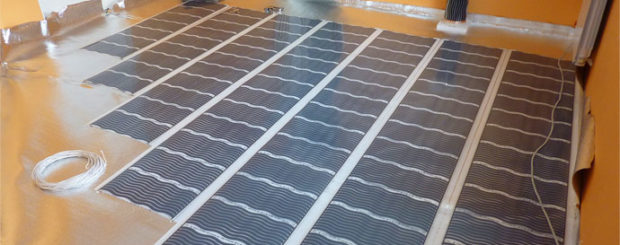
Film happens solid and segmented. The latter option is more common. A segmented film can be striped, wavy, in the form of a honeycomb and even with perforation (used for screeding, it has good adhesion to concrete and higher power). Solid film appeared later, it withstands more severe loads and is used for styling in gyms and shops. Moreover, a continuous film can be covered with furniture - it can self-regulate, and the rearrangement of furniture is not afraid of it. Some manufacturers produce a special film for laying in infrared saunas.
pros:
- instant heating;
- high efficiency and profitability, thermal energy losses are minimal;
- simplicity and speed of installation;
- a thin film will keep the height of the room;
- maintainability. If any part of the film is damaged, it can be removed and replaced. If one element is damaged, the rest continue to work;
- service life up to 20 years;
- the air does not dry out;
- You can turn on the heating immediately after installation.

Minuses:
- temperature regulators and temperature sensors often fail first after 5-7 years of operation, so you have to change them;
- installing heavy furniture and household appliances can damage the IR film;
- for proper installation of the film and its long-term operation, the base must be perfectly even;
- price.
IR film floor stack under the laminate, parquet, carpet and linoleum. For ceramic tiles, many manufacturers do not recommend mounting it. If this is not prohibited by the manufacturer, then get ready for complex installation using special waterproofing materials. In this case, it is more convenient to use a cable floor.
Power is 130-230 W / m2, so that the room will warm up efficiently. Such underfloor heating can be used as the main and additional source of heat. To be used as primary heating, the film must cover 70% of the floor area. If you can’t meet the conditions, then take a more powerful film (more than 220 W / m2) for rooms where it covers less than 60% of the floor.
No. 5. Rod infrared floor
This type of floor also works on the principle of infrared radiation, only instead of a film parallel rods are used here. The rods are flexible, but they are much stronger than the fragile IR film, which makes the system more reliable. The rods are stacked or tile adhesive. The power of carbon rods reaches 130-160 W / m2. The width of the roll is 83 cm, the length is up to 20 m, and the pitch between the rods is 9-10 cm.
Benefits:
- profitability, efficiency and high heating rate, as with IR film;
- simple installation;
- you can, without fear, put heavy furniture;
- reliability;
- universality. Such a warm floor is compatible with all known flooring;
- regulation of heat. When overheated, the rods simply stop giving IR rays, so you can not be afraid of permutations. However, in order for self-regulation to be realized, it is imperative to immerse the rods in a 3 cm thick screed.
Minuses:
- high price;
- claims on the durability of carbon rods. Often burning occurs at the junction of the rod and conductor.

No. 6. Underfloor heating power
Regardless of what type of underfloor heating is selected, it is necessary to determine the necessary heating power, which depends on a mass of factors:
- climate of the region, orientation of the room to the cardinal points;
- material of walls, roofs and ceilings;
- quality of thermal insulation. If the apartment is poorly insulated, then it makes no sense to install underfloor heating;
- type and purpose of the room, the desired heating temperature;
- function of underfloor heating - main or additional heating.

Specialists who provide comprehensive services for the installation of underfloor heating can accurately calculate the required power. This is a difficult task, which requires taking into account a lot of factors. You can try to perform the calculation yourself using special programs and calculators, which are full on the Internet: it will be enough to enter the source data, and everything will be calculated automatically. If you are too lazy to do this, or you want to roughly estimate the required power, then use averaged parameters (for the middle strip of Russia, in conditions of high-quality insulation and double-glazed windows):
- if the floor will be used for basic heating - 150-200 W / m2;
- on loggias - 130-180 W / m2, maximum 200 W / m2;
- for a wooden floor - 60-80 W / m2;
- apartments on the ground floors or above an unheated room - 130-180 W / m2, maximum 200 W / m2;
- in bathrooms - 130-140 W / m2, maximum 200 W / m2;
- in kitchens, living rooms - 100-150 W / m2, maximum 170 W / m2.

Number 7. Thermal insulation
If you do not use a layer of thermal insulation, then heat risks going not only to the apartment, but also to the heating of powerful floors and walls of the house. Not only will the apartment be colder, but you will pay for heating the floors from your pocket.
Thermal insulation is strictly necessary:
- IR film requires reflective insulation;
- Mineral slabs or extruded polystyrene are placed under the cable floor.
The thickness of the insulation layer depends on the characteristics of the room. If there is a heated room below, then a layer of up to 20 mm is enough, if below - a basement, or insulation is on the balcony, it is better to use a layer of 35-40 mm.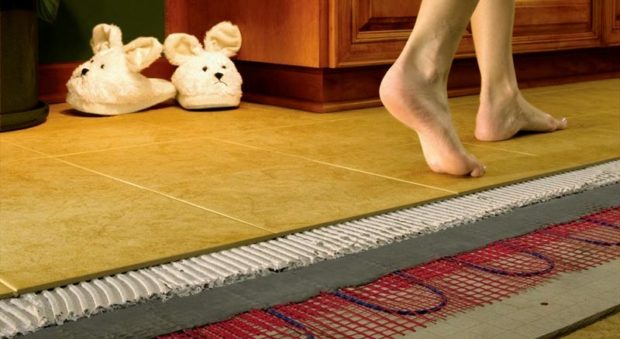
Number 8. So which electric underfloor heating is better to choose?
No one will give a definite answer to this question. It all depends on such key factors:
- type of flooring. If you are going to lay ceramic tile, granite, stone, bulk floor, then feel free to choose a cable underfloor heating. If you are ready to invest for the sake of convenience, - cable floor on finished mats. Under a laminate, a parquet board, linoleum and a carpet it is better to mount an IR film;
- room height. If the room is high, and the fact of reducing it by 8-10 cm does not upset you, then you can install the cable floor (insulation layer + cable + screed + finishing material = 8-10 cm). If such a decision causes inconvenience or makes low room even lower, then stop at the thermomats (loss in height up to 5 cm) or IR film (up to 2 cm);
- humidity. For the bathroom and toilet (and other wet rooms) where the tiles will be laid, it is better to choose a cable floor or thermomats. Of course, modern waterproofing materials almost perfect and allow you to use any warm floor in damp rooms, but why unnecessary waste and risk;
- issue price. The usual cable is considered to be the cheapest (by the way, it still remains the most popular), but the price of materials for screed, as well as payment to specialists, should be added to the final cost, since the process is quite time-consuming and complicated. Thermomat costs 25-30% more expensive than a conventional cable, but you can save on installation costs. The film is the most expensive, but in the installation is simple and we consume a minimum of energy, it quickly pays off. The core floor is so far the most expensive and disadvantageous;
- power consumption. The most economical will be an IR film, followed by a conventional cable, and the most expensive to operate are thermomats. They consume 30% more electricity than cable. A concrete screed warmed by a cable for some time generates heat after turning off the heating; IR technology does not have this;
- ease of installation. Thermomats and IR film can also be installed on their own. The cable floor requires a coupler, count the turns of the cable and stack them correctly;
- maintainability. To fix the cable floor heating, you have to break the screed! Mats and film in this case greatly benefit.
Please note that it is not recommended to install the underfloor heating system under heat-insulating coatings. This includes cork flooring and high-wool materials. The loss is small - such coatings are already comfortable to move and have a warm surface.
No. 9. What else to consider when buying?
To guarantee a good and durable warm electric floor, pay attention to the following nuances:
- temperature controller can control temperature over the air and across the floor. If the underfloor heating is the main source of heat, it is better to set the regulation of indoor air. In the children's room, bathroom, the temperature of the floor is important. There are double adjustments. It makes sense to use them for wooden floors;
- along with the purchase of the warmest floor, it is better to immediately get everything component parts;
- warm floor must have certification and warranty. Also, instructions should be attached to the system indicating the operating conditions and installation details;
- Before buying, check the condition of the cables / film / rods, assess the integrity and conformity of the declared configuration;
- give preference to products trusted manufacturers. Among the most reliable, we note Rehau, Devi, Energy, Ensto, Eltherm, Caleo, Teplolux.

Finally
Electric underfloor heating is not perfect at all. They entail an increase in energy costs. In most cases, you will have to clearly think about the location of furniture, appliances and not to rearrange. Some systems can only be connected by professionals, and if the climate in the region is harsh, then consider a warm floor as the only source of heat is not worth it. But still, Despite this, electric heat-insulated floors - it is convenient, reliable, comfortable and safe, and often also simply, therefore, such systems actively displace water-based warm floors.

